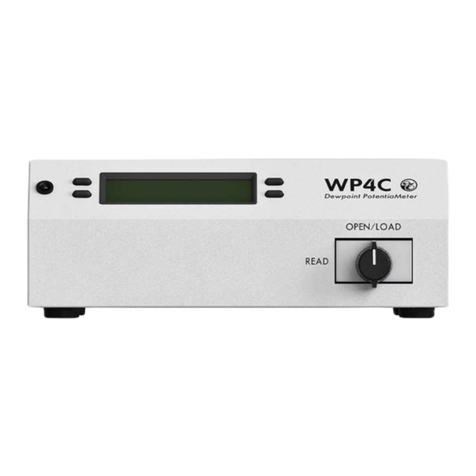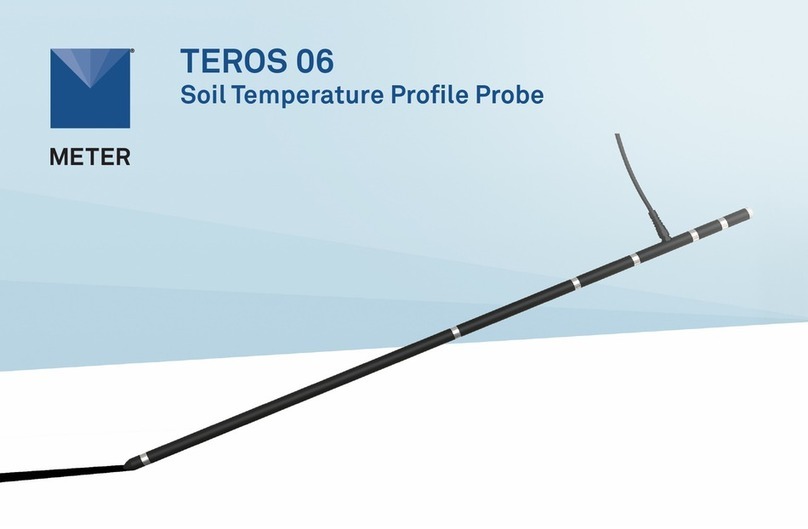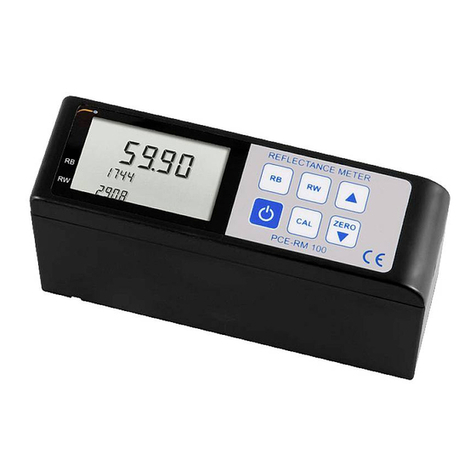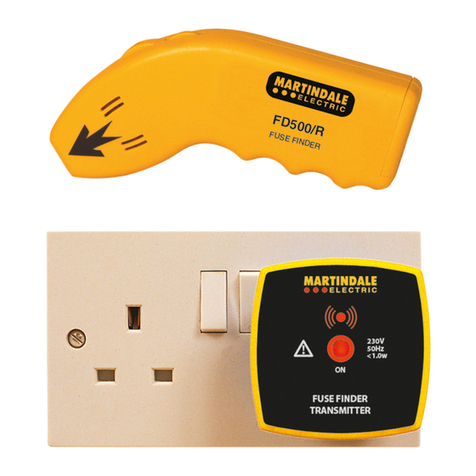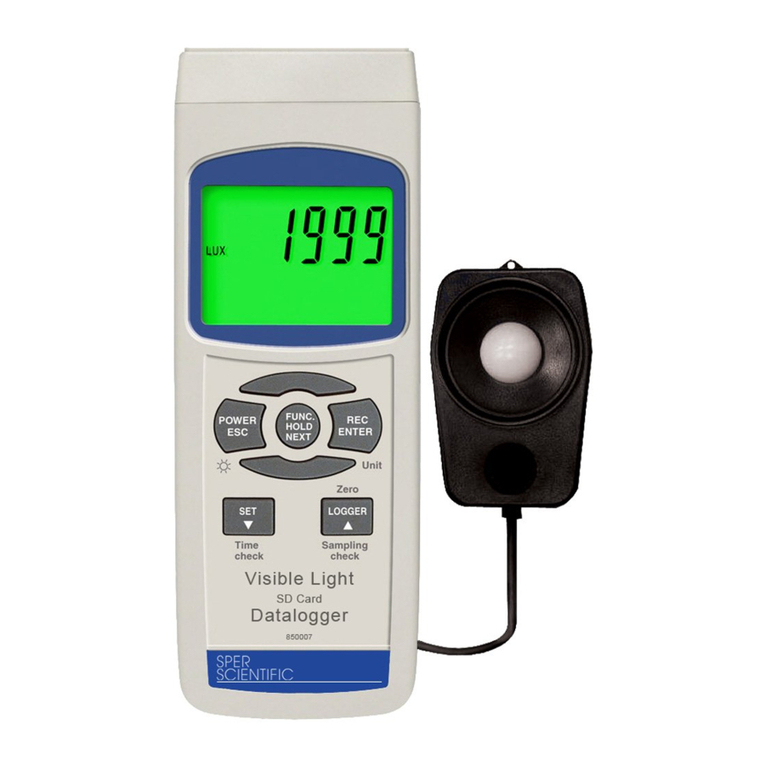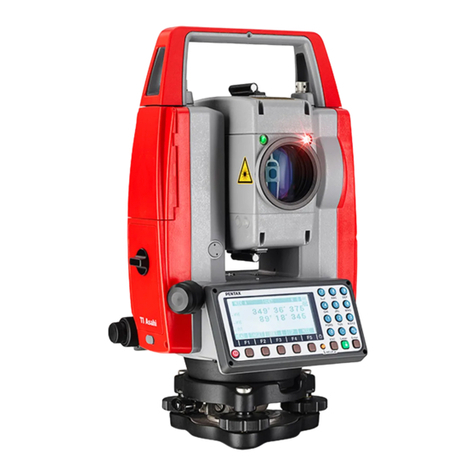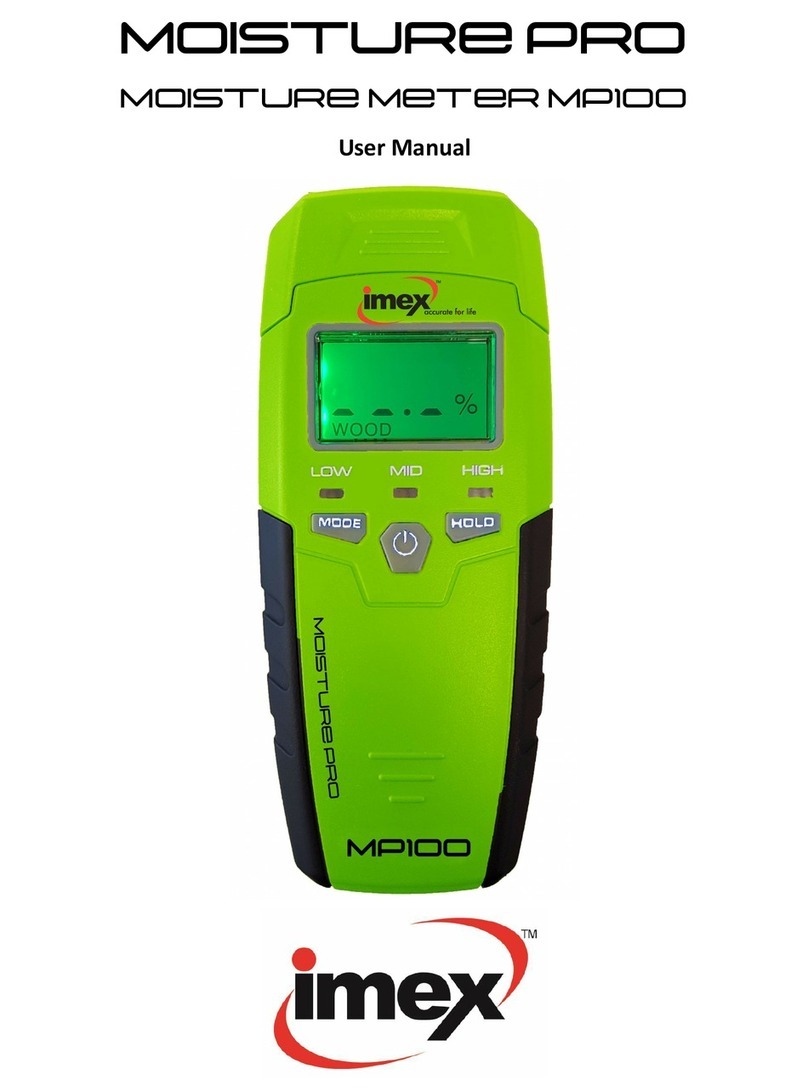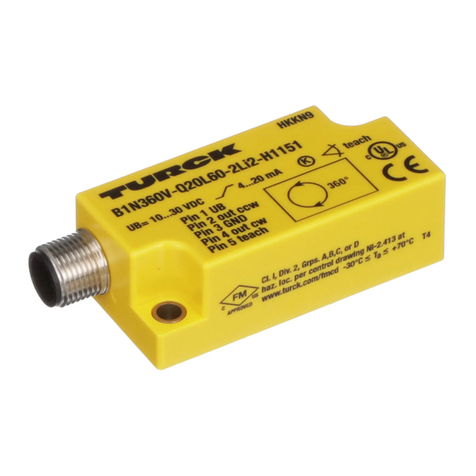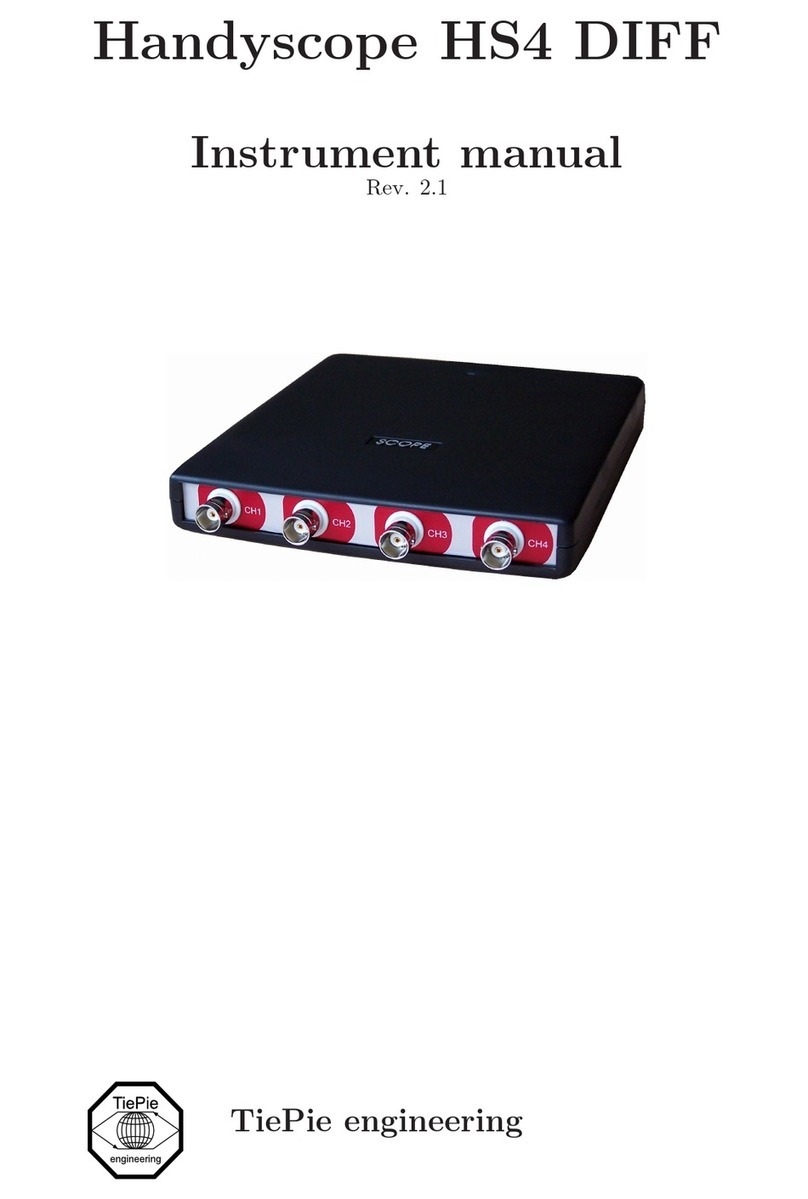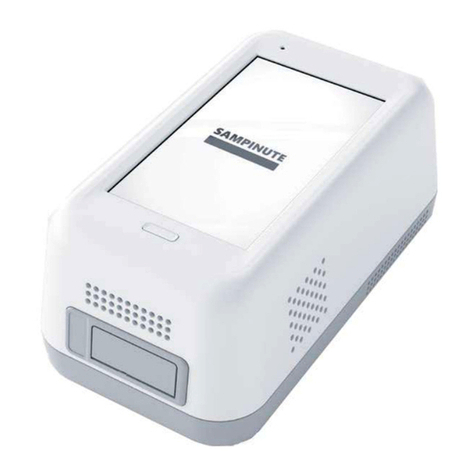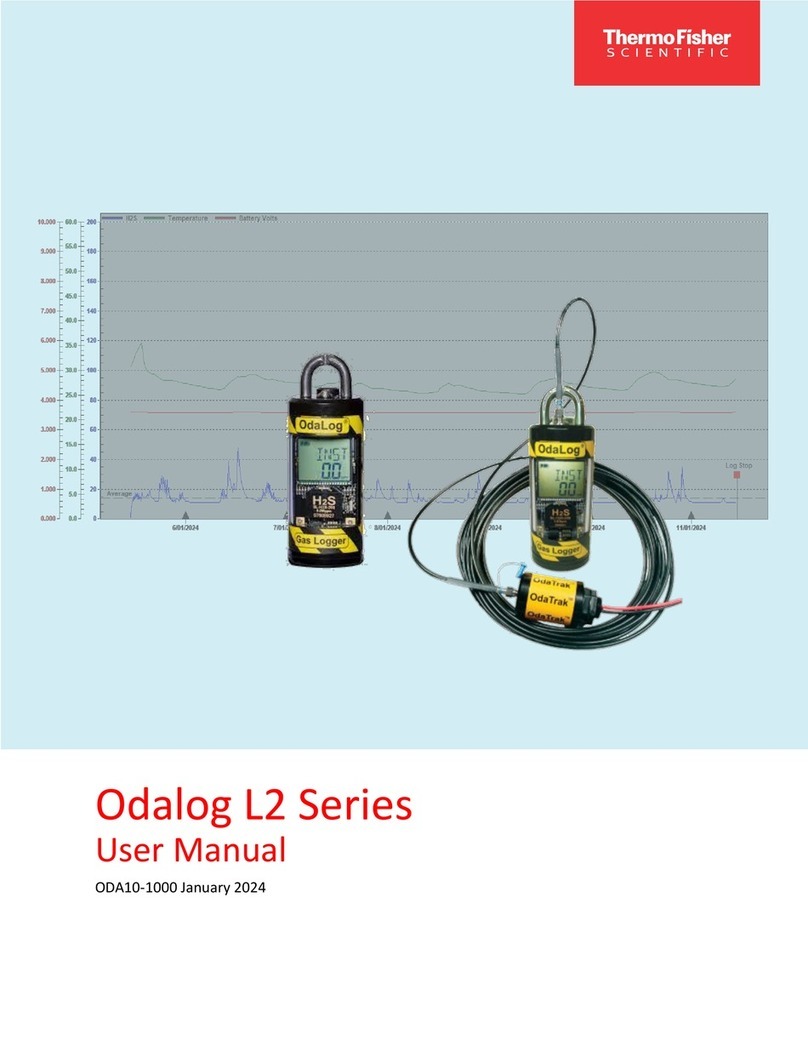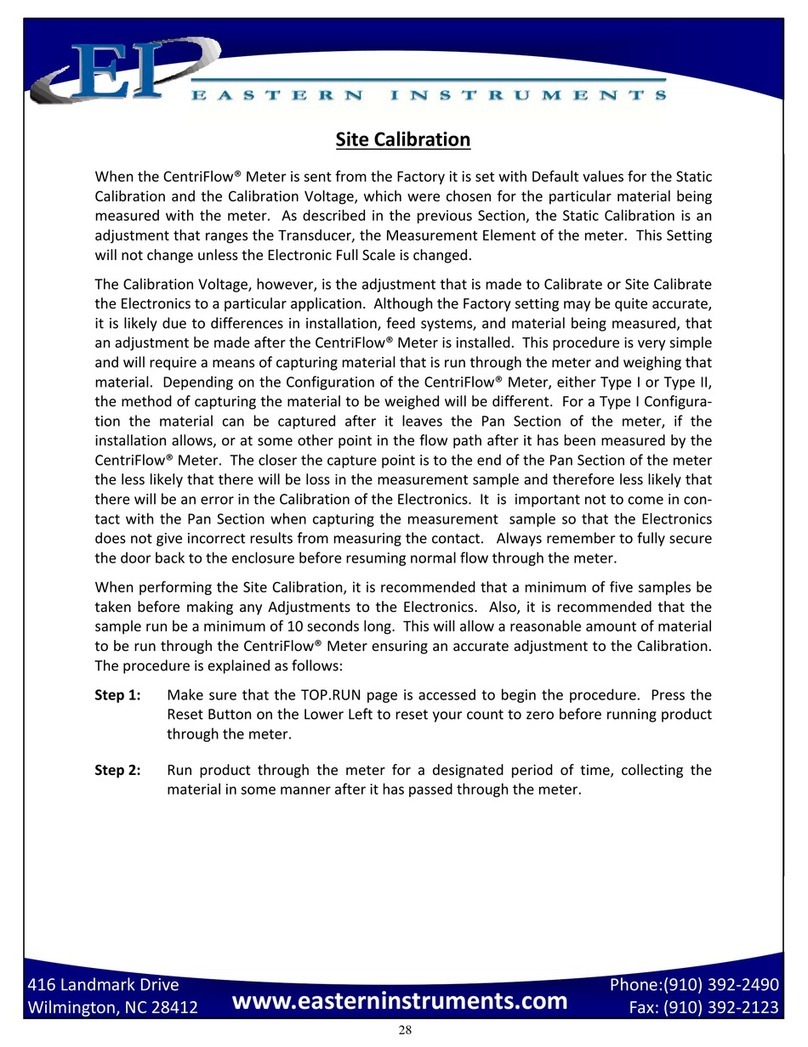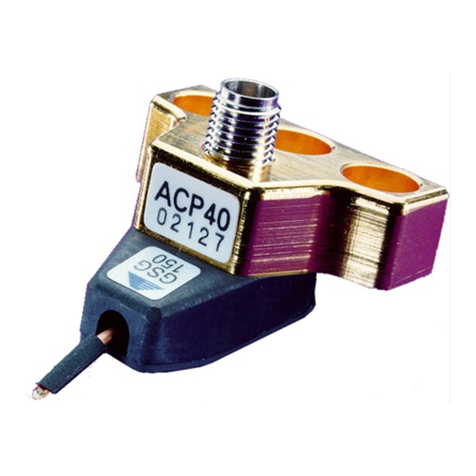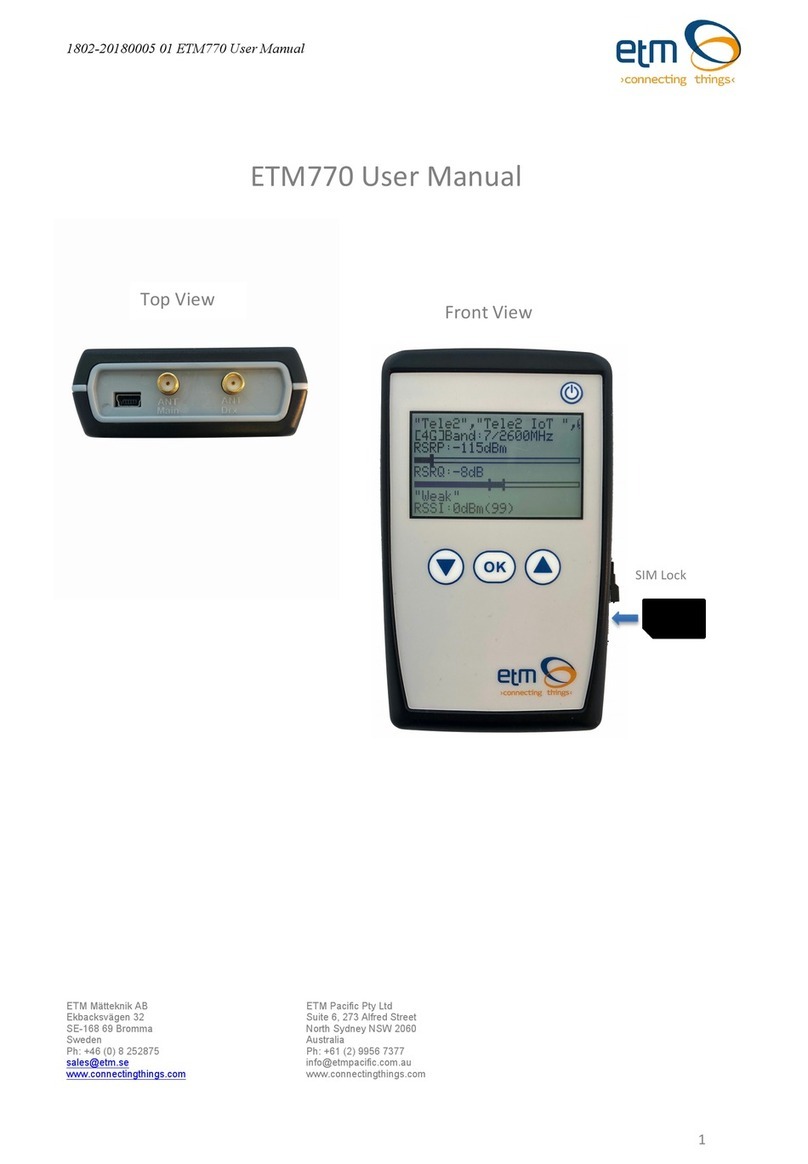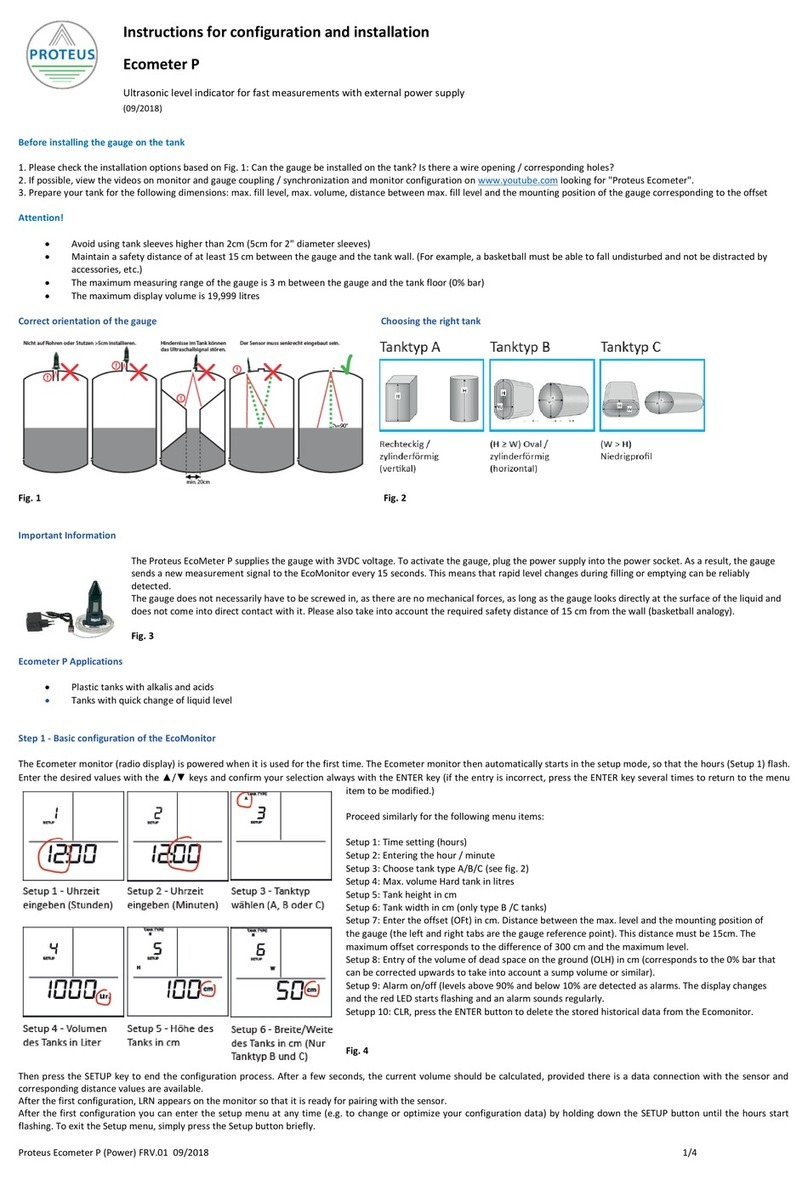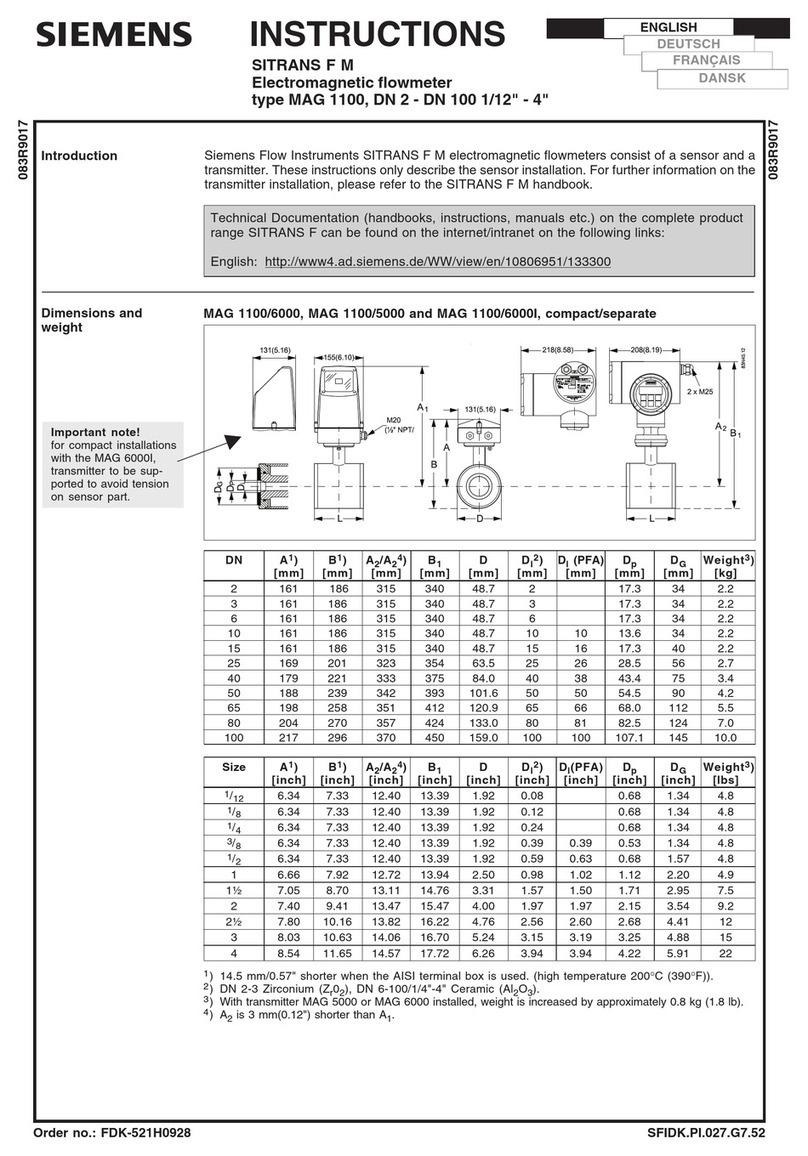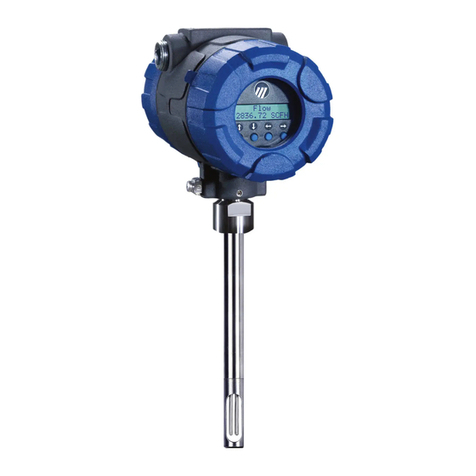METER THERMOLINK User manual

i
TABLE OF CONTENTS
1. Introduction..............................................................................................1
2. System.........................................................................................................2
2.1 Specifications............................................................................................ 2
2.2 THERMOLINK Controller ............................................................................5
2.2.1 Main Menu .......................................................................................7
2.2.2 Take a Reading Screen......................................................................7
2.2.3 Measurement Configuration Screen................................................. 8
2.2.4 Stored Readings Menu ................................................................... 10
2.2.5 Unattended Mode Screen...............................................................12
2.2.6 Device Configuration Screen .......................................................... 14
2.2.7 About Screen.................................................................................. 14
2.3 Selecting a Sensor ...................................................................................15
2.3.1 KS-3 Sensor ................................................................................... 15
2.3.2 TR-3 Sensor.................................................................................... 16
2.3.3 SH-3 Sensor ................................................................................... 16
2.3.4 RK-3 Sensor ................................................................................... 17
3. Operation ................................................................................................. 18
3.1 Controller Configuration .......................................................................... 18
3.2 Measurement Configuration .................................................................... 19
3.3 Sensor Installation .................................................................................. 22
3.3.1 Rock or Cured Concrete (RK-3).......................................................23
3.3.2 Wet Cement.................................................................................... 23
3.3.3 Solid Material (TR-3) ......................................................................24
18215-00
1.26.2018

ii
THERMOLINK
3.4 Take a Reading......................................................................................... 24
3.5 Saving and Viewing a Reading.................................................................. 26
3.6 Interfacing with THERMOLINK Utility ...................................................... 27
3.7 Install THERMOLINK Utility...................................................................... 27
3.7.1 Download Data ............................................................................... 27
3.7.2 Update Firmware Version ............................................................... 29
4. Theory........................................................................................................ 30
4.1 Dual-Needle Algorithm ............................................................................ 31
4.2 Single-Needle Algorithm ......................................................................... 32
4.3 Understanding the SYX Value .................................................................... 33
5. Service....................................................................................................... 34
5.1 Sensor Maintenance and Verification ...................................................... 34
5.1.1 Verification withtheKS-3,TR-3,orRK-3 ....................................... 34
5.1.2 Verification with the SH-3.............................................................. 36
5.2 Controller Maintenance ........................................................................... 36
5.3 Troubleshooting ....................................................................................... 37
5.4 Customer Support.................................................................................... 38
5.5 Terms and Conditions .............................................................................. 38
References .................................................................................................... 41
Index ................................................................................................................. 42

INDEX
43
R
readings
best practices 20–21, 26
read time 20–21, 25
references 41
resistivity
Seespecifications, resistivity
Rock Sensor kit (RK-3) 1
R-value 12, 24
S
sample
Seesensors, installation
types 15
screen 6
brightness 19
sensors
accuracy 3
cleaning 34
installation 22
types 15–17
verifying performance
KS-3 34–35
RK-3 34–35
SH-3 36
TR-3 34–35
service
controller 37
sensors 34
software 27
specifications
conductivity 3
controller 2
diffusivity 4
KS-3 sensors 3
resistivity 3
RK-3 sensor 4
SH-3 sensor 4
TR-3 sensor 3
volumetric specific heat capacity 4
T
taking a reading 22–24
terms and conditions 38–39
theory 30–33
dual-needle algorithm 31–32
error 33
single-needle algorithm 32–33
THERMOLINK utility 27–28
time 5, 18
setting 19
troubleshooting
controller 37
sensors 37
V
view reading 25–26
results 10–11
volumetric specific heat capacity
Seespecifications, volumetric specific heat
capacity
W
warranty 18, 39
x 5
x 3
TR-3/RK-3
verification jig
KS-3
verification jig
Extra vial
septum
SH-3
verification jig
Vial of
glycerin
TR-3
drill bits
TR-3
pilot pins
SH-3
sensor
SH-3
needle
guide
KS-3
sensor
TR-3
sensor
Thermal
grease
Mini-USB to
USB cable
THERMOLINK
controller
Includes:
SDS
Certificate of Analysis
NOTE: Not all sensors are included in the THERMOLINKThermal Properties Analyzer kit shown above. Custom
sensor kits are available separately (i.e., RK-3 sensor). Contact Customer Support for more information.

1
THERMOLINK
1. INTRODUCTION
Thank you for purchasing the THERMOLINK Thermal Properties Analyzer from METER Group.
This manual will help the user understand and use the THERMOLINK controller to the best
of its capability. Upon receipt, please verify that all components were shipped and appear in
good condition.
• THERMOLINK controller
• Carrying case
• Mini-USB data download cable
• 5 AA alkaline batteries (installed in THERMOLINK controller)
• Glycerin verification standard
• Sensor positioning jigs
• Thermal grease
• Sensors (ordered with device)
• Pilot pins (if TR-3 sensor ordered)
• Drill bits (if TR-3 sensor ordered)
• Extra septum
• SH-3 needle guides (if SH-3 sensor ordered)
• SH-3 Delrin®verification block (if SH-3 sensor ordered)
The RK-3 Rock Sensor kit includes the following items and is available separately by
contacting Customer Support:
• 5/32-in (4-mm) drill bit
• RK-3 sensor
• Arctic alumina
• 1-m cable
NOTE: Custom cable lengths of 2,3, 5, and 10 m are available available upon request.
INDEX
42
INDEX
A
about screen 7, 14
accuracy 3–4
needle specs
KS-3 3
RK-3 4
SH-3 4
TR-3 3
annotate 13, 26
B
batteries 1, 13, 18
life span 2
status 5
best practices 15–17
C
clock
Seetime
conductivity
Seespecifications, conductivity
contact resistance 10, 15, 30–33
customer support 38
D
data
downloading 27–29
erasing 11
saving 25–26
storage capacity 2
viewing 10–11
date
initial start 18
of reading 12
device configuration 18–19
menu 7
diffusivity
Seespecifications, diffusivity
download 27–29
D-pad 5, 6, 10, 11, 13, 22, 24, 26–27
E
email address 38
equilibration 24, 28, 35
erase 10, 11
error 11
Syx 12, 25, 33
F
fax number 38
firmware 7
update 28, 29
version 14
fluids
Seeliquids
H
heating time 9, 30–33
K
keypad
SeeD-pad
L
liquids 9, 15, 16, 30
M
measuring units 9, 12, 19, 25
memory
capacity 2, 10
menus
device configuration 11, 18–20
main menu 7
measurement configuration 19–22
stored readings 7, 10, 26
unattended mode 5, 7, 11, 12, 15
P
phone number 38
power mode 15, 20–21, 25

41
THERMOLINK
REFERENCES
Abramowitz M, Stegun IA. 1972. Handbook of mathematical functions. New York (NY). Dover
Publications, Inc.
Blackwell JH. 1954. A transient-flow method for determination of thermal constants of
insulation materials in bulk. J. Appl. Phys. 25:137–144.
Bristow KL, White RD, Kluitenberg GJ. 1994. Comparison of Single and Dual Probes for
Measuring Soil Thermal Properties with Transient Heating. Australian Journal of Soil
Research, 32:447–464.
Bruijn PJ, van Haneghem IA, Schenk J. 1983. An improved non-steady state probe method for
measurements in granular materials.Part 1: Theory, High Temperatures High Pressures,
15:359–366.
Carslaw HS, Jaeger JC. 1959. Conduction of Heat in Solids, 2nd Edition. Oxford, London.
Kluitenberg GJ, Ham JM, Bristow KL. 1993. Error analysis of the heat pulse method for
measuring soil volumetric heat capacity, Soil Sci. Soc. Am. J. 57:1444–1451.
Knight JH, Kluitenberg GJ, Kamai T, Hopmans JW. 2012. Semianalytical solution for dual-
probe heat-pulse applications that accounts for probe radius and heat capacity. Vadose
Zone Journal. 11(2).
Marquardt DW. 1963. An algorithm for least-squares estimation of nonlinear parameters.
J.Soc. Indust. Appl. Math. 11:431–441.
Shiozawa S, Campbell GS. 1990. Soil Thermal Conductivity. Remote Sensing Rev. 5:301–310.
van Haneghem IA, Schenk J, Boshoven HPA. 1983. An improved non-steady state probe
method for measurements in granular materials. Part II: Experimental Results. High
Temperatures High Pressures. 15:67–374.
2
SYSTEM
2. SYSTEM
This section describes the specifications and components of the THERMOLINK system.
The system comprises the handheld device (Section2.2) and as many as four sensors
(Section2.3).
2.1 SPECIFICATIONS
OPERATING ENVIRONMENT
Controller
Range 0–50 °C
Power 5 AA batteries
Battery life More than 250 high-power measurements
Data storage 2,048 measurements in flash memory (both raw and processed
data are stored for download)
Read Modes Manual and unattended measurement modes
Sensors
Range –50 to 150 °C
PHYSICAL CHARACTERISTICS
Size
Controller
Length 18.5 cm (7. 28 in)
Width 10 cm (3.94 in)
Height 3.5 cm (1.38 in)
Carrying case
Length 37 cm (14.57 in)
Width 30 cm (11.81 in)
Height 10.5 cm (4.13 in)
Display size
Width 5.5 cm (2.17 in)
Height 4.0 cm (1.57 in)
Sensor interface DB-15 connector

3
THERMOLINK
SENSORS
KS-3 (6 cm [small] single needle)
Range
Conductivity 0.02–2.00 W/(m • K)
Resistivity 50–5,000 °C • cm/W
Accuracy
Conductivity ±5% from 0.2–2.0 W/(m • K)
±0.01 W/(m • K) from 0.02–0.2 W/(m • K)
Size 1.3 mm diameter ×60 mm length
Cable length 0.8 m
TR-3 (10 cm [large] single needle)
Range
Conductivity 0.1–6.0 W/(m • K)
Resistivity 25–1,000 °C • cm/W
Accuracy
Conductivity ±10% from 0.2–4.0 W/(m • K)
±0.02 W/(m • K) from 0.1–0.2 W/(m • K)
Size 2.4 mm diameter ×100 mm length
Cable length 0.8 m
40
SERVICE
SEVERABILITY. If any of the Terms and Conditions set out in this contact are declared
to be invalid by a court, agency, commission, or other entity having jurisdiction over the
interpretation and enforcement of this contract, the applications of such provisions to
parties or circumstances other than those as to which it is held invalid or unenforceable
will not be affected. Each term not so declared invalid or unenforceable will be valid
and enforced to the fullest extent permitted by law and the rights and obligations of the
parties will be construed and enforced as though a valid commercially reasonable term
consistent with the undertaking of the parties under the order has been substituted in
place of the invalid provision.
SET-OFF. The Buyer may not set-off any amount owing from the Seller to the Buyer against
any amount payable by the Buyer to the Seller whether or not related to this contract

39
THERMOLINK
SHIPMENT. In the absence of specific shipping instructions, the Seller, if and as requested
by the Buyer, will ship the goods by the method the Seller deems most advantageous. Where
the Seller ships the goods, the Buyer will pay all transportation charges that are payable on
delivery or, if transportation charges are prepaid by the Seller, the Buyer will reimburse the
Seller upon receipt of an invoice from the Seller. The Buyer is obligated to obtain insurance
against damage to the goods being shipped. Unless otherwise specified, the goods will be
shipped in the standard Seller commercial packaging. When special packing is required or, in
the opinion of the Seller, required under the circumstances, the cost of the special packaging
shall be the responsibility of the Buyer.
INSPECTION AND ACCEPTANCE. Goods will be conclusively deemed accepted by the
Buyer unless a written notice setting out the rejected goods and the reason for the
rejection is sent by the Buyer to the Seller within 10 days of delivery of the goods. The
Buyer will place rejected goods in safe storage at a reasonably accessible location for
inspection by the Seller.
CUSTOM GOODS. There is no refund or return for custom or nonstandard goods.
WARRANTIES. The Seller warrants all equipment manufactured by it to be free from
defects in parts and labor for a period of one year from the date of shipment from factory.
The liability of the Seller applies solely to repairing, replacing, or issuing credit (at the
Seller’s sole discretion) for any equipment manufactured by the Seller and returned by the
Buyer during the warranty period. SELLER MAKES NO SEPARATE OR OTHER WARRANTY
OF ANY NATURE WHATSOEVER, EXPRESS OR IMPLIED, INCLUDING THE WARRANTY OF
MERCHANTABILITY OR FOR A PARTICULAR PURPOSE. There shall be no other obligations
either expressed or implied.
LIMITATION OF LIABILITY. Seller will not be liable to the Buyer or any other person or entity
for indirect special, incidental, consequential, punitive, or exemplary damages in connection
with this transaction or any acts or omissions associated therewith or relating to the sale
or use of any goods, whether such claim is based on breach of warranty, contract, tort, or
other legal theory and regardless of the causes of such loss or damages or whether any other
remedy provided herein fails. In no event will the Seller’s total liability under this contract
exceed an amount equal to the total amount paid for the goods purchased hereunder.
WAIVER. In the event of any default under or breach of the contract by the Buyer, the Seller
has the right to refuse to make further shipments. The Seller’s failure to enforce at any time
or for any period of time the provisions of this contract will not constitute a waiver of such
provisions or the right of the Seller to enforce each and every provision.
GOVERNING LAW. The validity, construction, and performance of the contract and the
transactions to which it relates will be governed by the laws of the United States of America.
All actions, claims, or legal proceedings in any way pertaining to this contract will be
commenced and maintained in the courts of Whitman County, State of Washington, and the
parties hereto each agree to submit themselves to the jurisdiction of such court.
4
SYSTEM
SH-3 (3 cm dual-needle)
Range
Conductivity 0.02–2.00 W/(m • K)
Resistivity 50–5,000 °C • cm/W
Diffusivity 0.1–1.0 mm2/s
Volumetric specific
heat capacity
0.5–4.0 MJ/m3
Accuracy
Conductivity ±10% from 0.2–2.0 W/(m • K)
±0.01 W/(m • K) from 0.02–0.20 W/(m • K)
Diffusivity ±10% at conductivities above 0.1 W/(m • K)
±0.02 W/(m • K) from 0.1–0.2 W/(m • K)
Volumetric specific
heat capacity
±10% at conductivities above 0.1 W/(m • K)
Size 1.3 mm diameter ×30 mm length, 6 mm spacing
Cable length 0.8 m
RK-3 (6 cm [thick] single needle)
Range
Conductivity 0.1–6.0 W/(m • K)
Resistivity 17–1,000 °C • cm/W
Accuracy
Conductivity ±10% from 0.2–6.0 W/(m • K)
±0.02 from 0.1–0.2 W/(m • K)
Size 3.9 mm diameter ×60 mm length
Cable length 0.8 m
COMPLIANCE
Manufactured under ISO 9001:2015
EN 61326-1:2013
EN 55022/CISPR 22

5
THERMOLINK
2.2 THERMOLINK CONTROLLER
The THERMOLINK controller has a DB-15 pin receiver to connect to THERMOLINK sensors.
The other port on the reader is a mini-USB port for downloading data (Section3.6).
Every menu screen (Figure1) contains a header bar that displays (from left to right) the
current reading mode, time, current sensor pairing,and battery status.
Header
bar
Reading
mode Time
Current
sensor
Battery
status
Figure1 Device Configuration menu
The POWER button (Figure2) turns the THERMOLINK controller on and off. To completely
power down the unit, press the POWER button and hold for 5 s.
Pressing the BACK button (Figure2) moves the cursor back to the previous screen. When
it is pressed multiple times, the cursor moves back to the Main menu. Changes are
automatically saved.
The central control of the THERMOLINK controller is the D-pad (Figure2). Selecting
configurations or options in the THERMOLINK controller will require the use of these buttons.
• The CENTER button (Figure2) serves as the Select or Enter function.
• The UP, DOWN, RIGHT, and LEFT buttons (Figure2) are active when an icon or text on the
display screen is highlighted in red.These arrows allow the user to scroll within a field or to
select a field before pressing the CENTER button.
The device automatically goes to sleep when not used for more than 5 min. While in
unattended mode, the screen will turn off after 5 min, but scheduled readings will continue.
38
SERVICE
5.4 CUSTOMER SUPPORT
Customer service representatives are available for questions, problems, or feedback Monday
through Friday, 8 am–5 pm Pacific time.
Email: support.environment@metergroup.com
sales.envir[email protected]
Phone: +1.509.332.5600
Fax: +1.509.332.5158
Website: metergroup.com
If contacting METER by email, please include the following information:
Name
Address
Phone
Email address
Instrument serial number
Description of the problem
NOTE: For THERMOLINKThermal Property Analyzers purchased through a distributor, please contact the distributor
directly for assistance.
5.5 TERMS AND CONDITIONS
CONTRACT FORMATION. All requests for goods and/or services by METER Group, Inc. USA
(METER) are subject to the customer’s acceptance of these Terms and Conditions. The
Buyer will be deemed to have irrevocably accepted these Terms and Conditions of Sale
upon the first to occur of the Buyer’s issuance of a purchase order or request for goods or
services. Unless expressly assented to in writing by METER, terms and conditions different
are expressly rejected. No course of dealing between the parties hereto shall be deemed to
affect or to modify, amend, or discharge any provisions of this agreement.
PRICES AND PAYMENT.Invoice prices will be based upon METER prices as quoted or at
METER list price in effect at the time an order is received by the Seller. Prices do not include
any state or federal taxes, duties, fees, or charges now or hereafter enacted applicable to the
goods or to this transaction, all of which are the responsibility of the Buyer. Unless otherwise
specified on the invoice, all accounts are due and payable 30 days from the date of invoice.
Unpaid accounts extending beyond 30 days will be subject to a service charge of 2% per
month (24% per annum). Should Seller initiate any legal action or proceeding to collect on
any unpaid invoice, Seller shall be entitled to recover from Buyer all costs and expenses
incurred in connection therewith, including court costs and reasonable attorney’s fees.
RISK OF LOSS AND DELIVERY TITLE. Liability for loss or damage passes to the Buyer when
the Seller delivers the goods on the Seller’s dock or to the transporting agent, whichever
occurs first. The Seller has the right to deliver the goods in installments. Shipping and
delivery dates communicated by the Seller to the Buyer are approximate only.

37
THERMOLINK
2. Using a Phillips head screwdriver, unscrew the two Phillips head screws from the right
and left sides of the battery box cover.
3. Gently pull the cover from the top to expose the battery compartment.
The battery receptacles to the right and left have two batteries each, while the center
receptacle only has one battery.
4. Remove the old batteries.
5. Insert new batteries, orienting them according to the polarity marks shown in the case.
6. Replace the cover and return the screws.
7. Turn on the THERMOLINK controller.
8. Update the time and date as prompted.
If the THERMOLINK controller should ever require servicing, please contact Customer Support.
5.3 TROUBLESHOOTING
The THERMOLINK controller will gives two error messages described in Table 4.
Table 4 Troubleshooting the THERMOLINK
Problem Possible Solutions
Low battery Replace the batteries using the instructions in Section5.2.
The sensor does not match
the configuration. Correct the configuration using the instructions in Section3.2.
Sensor failure attributed to abuse is the greatest source of inaccuracy in the system.
This failure may not be visible and will only be detected by running a verification test
(Section5.1). While testing the verification standard, note signs that may indicate a problem
with the heating of the sensor.
The following situations may indicate sensor failure. No significant increases in height of the
red progress bars indicating a rise in temperature.
• A slight rise in temperature measurements between the beginning and end of the reading.
• A zero or negative temperature reading.
• Any temperatures that may be unexpected based in the prevailing conditions during the
measurement.
Please contact Customer Support if any of these situations are observed.
6
SYSTEM
D-pad
BACK button
LED screen
CENTER button
RIGHT button
LEFT button
DOWN button
UP button
POWER button
DB-15
connection port
Mini-USB port
Figure2 THERMOLINK controller

7
THERMOLINK
2.2.1 MAIN MENU
The Main menu is the starting point for all of the firmware applications within the device.
Measurement
Configuration
Unattended
Mode
Stored Readings
Device Configuration
About
Take a Reading
Figure3 Main menu
There are six icons in the Main menu that represent the six main functions of the
THERMOLINK.
• Taking a Reading (Section2.2.2)
• Measurement Configuration (Section2.2.3)
• Stored Readings (Section2.2.4)
• Unattended Mode (Section2.2.5)
• Device Configuration (Section2.2.6)
• About (Section2.2.7)
2.2.2 TAKE A READING SCREEN
The Take a Reading screen is where a user will start a single measurement after configuring
measurement options.
To reach the Take a Reading screen, select the icon labeled Take a Reading in the Main menu
(Figure4).The last completed reading will be displayed on the Take a Reading screen.
• If the sensor name is highlighted in RED, the sensor is not compatible with the mode.
• If a sensor name (KS-3, TR-3, SH-3, or RK-3) does not appear in the header bar, the reader
has not detected any sensor.
• If the sensor name is in GREEN, it is compatible with the selected reading mode (Section3.2).
36
SERVICE
13. Compare the reading of the value recorded on the Certificate of Quality Assurance
(included in the THERMOLINK kit) to the results from the verification reading. For the
sensor to be reading accurately, the measurements must be within ±10% of the glycerin
standard.
5.1.2 VERIFICATION WITH THE SH3
Use the two-hole, white Delrin block to verify the performance of the dual-needle (SH-3) sensor.
1. Fully insert the SH-3 sensor into the predrilled holes in the Delrin block.
2. Allow it to equilibrate for at least 15 min before taking the measurement.
The Delrin blocks have slightly different thermal conductivities from lot to lot, so
the correct values for K, C, and Dspecific for individual Delrin block are recorded on
the Certificate of Quality Assurance (included in the THERMOLINK kit).Each block is
matched with a specific SH-3 sensor.
NOTE: Holding or touching the Delrin block before or during the measurement will induce a temperature drift
and may adversely impact the reading.
3. Compare the value recorded on the Certificate of Quality Assurance (included in the
THERMOLINK kit) to the results from the verification reading. For the sensor to be
reading accurately, the measurements must be within ±10% of the Delrin standard.
5.2 CONTROLLER MAINTENANCE
The THERMOLINK controller maintenance requires replacing the batteries. A low-battery
alert will appear on the screen. The THERMOLINK controller requires five alkaline AA
batteries. Follow the steps below to change the batteries:
1. Turn the THERMOLINK controller over and locate the battery cover in the lower section
of the back panel (Figure23).
Battery cover
Figure23 Battery cover

35
THERMOLINK
4. Before taking a measurement in the glycerin, ensure that the system is not undergoing
rapid temperature drift.
Seemingly small sources, such as the heat from holding the vial for a few seconds
or the cooling from direct air conditioning flow, can decrease the accuracy of the
measurement. It is best to place the needle and vial in an isothermal environment
(e.g., an insulated chamber or cooler), and allow 15 min of equilibration time before
taking the measurement.
NOTE: If the vial is moved or shaken while the instrument is measuring the glycerin verification standard, the
readings will be adversely impacted.
5. On the THERMOLINK controller, navigate to the Measurement Configuration screen
(Section3.2).
6. Choose Conductivity/Resistivity field.
7. Select the sensor type.
8. Set the power to low.
9. Leave all the other presets the same.
10. Press BACK to go the Main menu.
11. Select Take a Reading to take a measurement (Section3.4).
12. At the end of the measurement, choose Save as Verification to tag the measurement
with a V to indicate verification.
The thermal conductivity of the glycerin is 0.285 W/(m • K) 20 °C.
Sensor
Sensor needle
Verification jig
Glycerin vial for
verification
Cable from sensor to
handheld controller
Figure22 Verification holder for single-needle sensors
NOTE: After repeated use,the septum may begin to leak. METER provides replacement septums with the
instrument. To replace,simply remove the cap,press the old septum out, and replace with a new one.
8
SYSTEM
Main menu Reading screen
Figure4 Navigating to the Take a Reading screen
2.2.3 MEASUREMENT CONFIGURATION SCREEN
The Measurement Configuration screen is where a user will select the correct option for
desired readings.
To reach the Measurement Configuration screen, select the Measurement Configuration icon
on the Main menu.
Main menu Measurement Configuration screen
Figure5 Navigate to the Measurement Configuration screen

9
THERMOLINK
CHANGING DEFAULT VALUES
Default values will show in the Measurement Configuration screen when a Type of
Reading has been selected (Figure5). Each reading mode has the following settings
options for optimal configuration based on the material:
• Sensor type
• Power level
• Read time
• Conductivity units
• Resistivity units
Setting values that include the label (default) can be changed to a different value.
Depending on the type of reading selected, the default settings may not be changed and
will be labeled (only) after the settings value. This is the only place in the controller that
these configuration options can be changed. The conductivity and resistivity units may be
modified in all situations. Refer to Figure5 for examples of the use of the (default) and
(only) labels on the Sensor, Power, and Read Time measurement categories.
NOTE: Changing between the SI and Imperial units also changes the units on all previous readings saved in the memory.
CHOOSING THE BEST POWER MODE
The THERMOLINK controller will automatically choose the best heating time for the material
selected in the Measurement Configuration screen (Figure5).
Configure the THERMOLINK controller to measure each of the four sensor types in either
high-power mode or low-power mode by selecting the reading type Conductivity/Resistivity
(Diffusivity/Heat Capacity for the SH-3 sensor) in the Measurement Configuration screen
(Figure14). In high-power mode, the THERMOLINK controller applies a relatively large
heating current to the sensor during a measurement that results in greater sensor heating. In
low-power mode, the THERMOLINK controller applies a small current to the sensor resulting
in less heating of the sensor. The KS-3 needle defaults to low-power mode, while the TR-3,
SH-3, and RK-3 needles default to high-power mode.
METER recommends that only expert operators change the power mode from the default
settings for special measurements. In all but a few cases, changing the power mode from the
default settings results in reduced accuracy. Contact Customer Support to discuss specific
measurements before changing from the default power-mode setting.
CAUTION: Do not attempt to make measurements in liquids with the KS-3 or TR-3 in high-power mode.The additional
heating from the higher heat input causes free convection and compromises the measurement.
CAUTION: Do not attempt to make measurements in liquids with the SH-3 (dual-needle) or RK-3 sensors.
34
SERVICE
5. SERVICE
This section describes the maintenance of the THERMOLINK sensors and controller.
Troubleshooting solutions and customer service information are also provided.
5.1 SENSOR MAINTENANCE AND VERIFICATION
The stainless-steel needles can be cleaned with steel wool or other mild abrasives. The
needles can even be gently straightened with a pair of pliers, if needed. Be very cautious
when gently bending the needles; the heating element and temperature sensor in the needle
can easily be damaged.
The THERMOLINK controller makes readings based on the first principles of
thermodynamics using the precise measurement of temperature to 0.001 °C. Because of
this, no calibration is required.
The sensors will require periodic verification. Verification that the instrument is working
correctly can be done by measuring a standard of known thermal conductivity. The
THERMOLINK kit ships with two standard materials that can be used to verify that the
sensors are operating according to specifications:
• Clear vial of glycerin (glycerol) for the KS-3, TR-3, and RK-3 sensors.
• White plastic Delrin cylinder for the dual-needle SH-3 sensor.
Once a verification measurement has been made it can be tagged and saved as a verification
(Section3.5).
NOTE: The glycerin needs to be replaced annually and is labeled with an expiration date.Use USP-grade glycerin or order
a replacement vial. Vials of glycerin and Delrin cylinders (SH-3 only) can be ordered by contacting Customer Support.
5.1.1 VERIFICATION WITHTHEKS3,TR3,ORRK3
Use the glycerin to verify KS-3,TR-3 and RK-3 sensor performance. The cap of the vial has a
septum that allows direct insertion of the needle into the vial for verification.
There are two verification jigs to be used with the glycerin verification vial. One of the jigs
is intended to be used with the KS-3 needle.The second jig is for use with the TR-3 and
RK-3 needles.
1. Using the white Delrin verification jig (Figure22), insert the glycerin vial through the
opening in the bottom.
Center the needle into the center hole of the jig and plunge it through the septum into
the vial.
2. Orient the needle vertically and turn the vial of glycerin upside down on top of the needle.
3. Holding the vial upside down ensures that any bubbles in the glycerin float to the top
and away from the needle.
The verification jig centers the needle in the vial so that it will not touch the sides of
the vial.

33
THERMOLINK
iterative method, though. Values of toare supplied and the one is found that minimizes the
standard error of estimate. This procedure was used on samples of known conductivity,
such as glycerin and agar water, and on dry and wet soil. The 1-min readings on all of
these samples were more accurate than 10-min readings using Equation4. For all of these
calculations the first 16 s of temperature data were ignored.
4.3 UNDERSTANDING THE SYX VALUE
The THERMOLINK displays the standard error of estimate Syx to indicate how well the models
in Equation1, Equation2, and Equation5 fit the data. There is certainly a relationship
between this value and the uncertainty in thermal properties estimates, but it is a complex
one. The purpose of reporting a value is to alert the user when poor fits occur. The value
depends strongly on the thermal conductivity of the material being tested. For example,
it will be larger for measurements in insulation than for measurements in wet sand. It is
intended as an indicator of problems, and is not directly related to errors in the thermal
properties measurements. It has units of Kelvins, so a value of 0.001 indicates that the
standard error of estimate for the model fit to the data is 1 mK.
10
SYSTEM
One motivation behind allowing Power Mode Configuration (Section3.2 and Section3.4)
is to allow the TR-3 and SH-3 sensors to make better measurements in frozen materials
where the decreased heat input in low-power mode is less likely to cause phase change
(melting) of the frozen sample. One situation where it is not recommended that a nondefault
power-mode setting is the measurement of the thermal conductivity of snow. In this
case, the TR-3 needle is recommended to reduce issues with contact resistance, and it
is recommended that the sensor be configured to low-power mode to reduce issues with
melting.
2.2.4 STORED READINGS MENU
The Stored Readings menu allows the user to view all stored records or erase stored records.
The screen also indicates the number of records stored and the percentage of memory still
available to store records.
To reach the Stored Readings screen, select the Stored Readings icon on the Main menu. Use
the D-pad to select one of the two options (Figure6):
• View
• Erase
Main menu Stored Readings screen
Figure6 Stored Readings menu
VIEW
From the Stored Readings screen (Figure6), select the View option. This allows a user to view
all the data currently stored in the THERMOLINK controller (Figure7). Measurements are
stored in the order they are taken.

11
THERMOLINK
Figure7 Data View list
There are four columns in the Data View list:
1. Index—the sequential number assigned to the reading.
2. Tags—the designate measurements of particular interest:
X = The measurement is suspect (error term or temperature drift is high).
V = A verification measurement.
U = A measurement taken in unattended mode.
3. Annotation—the annotation, if one has been made.
4. Date—the date the measurement was taken as per the settings in Device Configuration.
ERASE
From the Stored Readings screen (Figure6) select the Erase option. This will erase all the
data stored on the THERMOLINK controller and the data is not recoverable.
INDEPTH DATA VIEWING
Toggle up or down through the initial view.The red highlighter bar indicates the selected
saved reading.
Press the CENTER of the D-pad to access additional information about the highlighted reading.
32
THEORY
search for the value of Dthat minimizes the squared differences between measured and
modeled temperature.This method gives the global minimum, and, if structured correctly, is
as fast as traditional nonlinear least squares. Once kand Dare determined, the volumetric
specific heat capacity can be computed using Equation3.
Equation3
/CDkρ=
4.2 SINGLENEEDLE ALGORITHM
There are three single needle sizes:
• KS-3 is 1.2 mm in diameter and 60 mm long
• TR-3 is 2.4 mm in diameter and 100 mm long
• RK-3 is 3.9 mm in diameter and 60 mm long
As with the dual-needle sensor, the probe temperature is monitored for at least 30 s to
determine the temperature drift. The start temperature and the drift are then subtracted
from the measurements. Current is then run through the heater for 60 s while the probe
temperature is monitored. If the needle were a line-heat source, Equation1 could be used to
predict its temperature. When Equation1 is used for single-needle analysis, the exponential
integral is expanded in an infinite series and only the first term in the expansion is retained,
as shown in Equation4. This is the equation used in the ASTM/IEEE mode.
Equation4
T(/ )qklntC4πΔ =+
This expansion is assumed to apply only at long heating times, so early time data are
left out of the analysis. Equation4 can, in fact, be shown to give correct results after
long enough times, but the times are very long, especially for low-conductivity materials.
Equation4 shows that conductivity is proportional to the inverse of the slope when
temperature is plotted vs. ln t. At long times the temperature hardly changes, so noise in
the measurements can strongly affect the measurement. Part of the problem with shorter
measurement times is that the neglected terms in the exponential integral expansion are
functions of diffusivity, so sample diffusivity affects the conductivity estimates. A bigger
problem, though, is that the line heat source has no heat capacity, and the real probe has
significant heat capacity. Another big problem is that there is often a contact resistance
between the probe and the medium in which it is placed.
To investigate these effects, the Knight et al. (2012) model was used to simulate sensor
data for a wide range of conductivities, diffusivities, and contact resistances.After fitting
Equation4 to these data, it was determined that the biggest problem is in the time scale. By
changing the equation to
Equation5
()T(/ ) Clnqk tt4o
πΔ +=+
where tois a time offset, all of the data fit well with heating times of 60 s. Effects of contact
resistance and diffusivity are eliminated or significantly reduced. The values of k, to, and C
are determined by least squares. This is another nonlinear least squares problem, which
could be solved using traditional methods (Marquardt 1963). It is solved by a different

31
THERMOLINK
to measure thermal properties.The THERMOLINK resolves temperature to ±0.001 °C and
determines the rate of temperature drift prior to the measurement to correct the reading
fordrift.
In the past the temperature data obtained from probes like those used in THERMOLINK were
converted to thermal properties using an approximation to the solution for the infinite line
heat source equations. In some cases this worked well, but in others the results were pretty
bad. Better equations have been available for a long time. Blackwell (1954) provided an exact
solution for a finite diameter heated probe with contact resistance, but it wasn’t useful for
analyzing time domain data because it was only in the Laplace domain. Finally, in 2012, a
method was discovered that transforms Blackwell’s solution to the time domain (Knight et al.
2012). That has been extensively used to produce improved algorithms for THERMOLINK.
Inverting the Knight et al. model requires more computing power than is available in a
battery operated microprocessor, so we generated data for a wide range of known thermal
properties using the Knight et al. model and then found corrections to the line heat source
based inversions that made them match the known thermal properties. Those algorithms
were then checked on real samples of known thermal properties.This allows us to use short
heating times and still avoid problems with contact resistance and sample diffusivity effects
that were problems with the old methods. The new algorithms are described below.
4.1 DUALNEEDLE ALGORITHM
Heat is applied to the heated needle for a set heating time, th, and temperature
is measured in the monitoring needle 6 mm distant during heating and during a
cooling period following heating. The readings are then processed by subtracting the
ambient temperature and the rate of drift. The resulting data are fit to Equation1 and
Equation2 using a least squares procedure.
Equation1
/)T(/ )i( DtrttqkE 44h
2#πΔ -=
Equation2
/[(/()][(/)]TEiDEiDtqk r tt r t t44
hh
22
2πΔ =----
^h
"
,
Δ
Tis the temperature rise at the measuring needle,qis the heat input at the heated needle
(W/m), kis the thermal conductivity (W/mK), ris the distance from the heated needle to
the measuring needle, Dis the thermal diffusivity (m2/s), tis time (s), and this the heating
time(s). Ei is the exponential integral and is approximated using polynomials (Abramowitz
and Stegun 1972).
The THERMOLINK collects data for at least 30 s to determine the temperature drift. If the
drift is below a threshold, current is applied to the heater needle for 30 s, during which
time the temperature of the sensing needle is monitored. At 30 s the current is shut off and
the temperature is monitored for another 90 s. The starting temperature and drift are then
subtracted from the temperatures giving the
Δ
Tvalues needed to solve Equation1 and
Equation2. We know the values of q, r, tand th, so we can solve for kand D.This could be
done using traditional nonlinear least squares (Marquardt 1963), but those methods often
get stuck in local minima and fail to give the correct result. If a value is chosen for Din
Equation1 and Equation2, the calculation becomes a linear least squares problem. We then
12
SYSTEM
11
12
13
11
12
13
1
2
3
4
5
6
7
8
9
10
1
2
3
4
5
6
7
8
9
10
Annotation for the measurement,
if there is one
Measurement mode used
Type of sensor used
Power mode
Measurement time
Temperature measured at the
start of the measurement
Time at the start of the measurement
Date of measurement
Any tags that have been made
Index number of measurement
Thermal reading
U-value, R-value, or resistivity (Rho)
(depending on units and ready type chosen)
Error (Syx) value
Figure8 Toggle verification screen
EDIT ANNOTATION OR TOGGLE VERIFICATION
To Edit Annotation or Toggle Verification (Figure8) select the desired feature with the
CENTER button.
• Edit Annotation allows changes to be made to the original annotation.
• Toggle Verification allows the user to add the V (verification) tag to any measurement. This
feature is available for users that need to record the measurements they use to verify the
THERMOLINK is reading correctly.
When finished, press the BACK button to return to the previous menu.
2.2.5 UNATTENDED MODE SCREEN
Unattended Mode (Figure9) allows the user to automatically make multiple readings at specified
intervals. To reach the Unattended Mode screen, select the Unattended Mode icon on the
Main menu.

13
THERMOLINK
Readings: 5
Interval: 15 min
Main menu Unattended Mode screen
Figure9 Unattended Mode screen
1. Use the Readings option to select the number of readings to take in any given
measurement session.
a. Use the D-pad to navigate to the Readings option and push the CENTER button.
b. Use the UP and DOWN arrows to toggle to the number of readings desired.
The number increases sequentially from 1–120. Above 120 readings, select max,
which programs the reader to run continuously until stopped or batteries fail.
c. Toggle to the RIGHT to select Done.
2. Use the Thickness option, available only when measuring insulation, to select the
thickness of the medium.
This will be used in determining a resistance (R-value).
3. Use the Interval option to program the frequency of readings.
For the first 15–60 min, choose intervals in increments of 5 min. After 60 min,intervals
increase by 1-h increments.
4. Use the Annotate and Start option to name the readings with a comment. Once an
annotation is made, readings will begin.
Set the number of readings and interval before choosing this menu option.
NOTE: Readings will be saved with the annotation given to them,followed by the measurement number in the
sequence being taken. For instance, if setting the annotation to Reading,the reader will save readings as Reading1,
Reading2, Reading3, etc.
30
THEORY
4. THEORY
Transient line heat source methods have been used to measure thermal conductivity of
porous materials for over 60 years. Typically, a probe for this measurement consists of a
needle with a heater and temperature sensor inside. A current passes through the heater
and the system monitors the temperature of the sensor over time. Analysis of the time
dependence of sensor temperature,when the probe is in the material under test, determines
thermal conductivity. More recently, the heater and temperature sensors have been placed
in separate needles. In the dual-probe sensor the analysis of the temperature versus time
relationship for the separated probes yields information on diffusivity and heat capacity, as
well as conductivity.
An ideal sensor has a very small diameter and is approximately 100 times longer than its
diameter. The sensor is in intimate contact with the surrounding material and measures
the temperature of the material during heating and cooling.Ideally, the temperature and
composition of the material in question would not change during the measurement.
Real sensors fall short of these ideals in several ways.
• A sensor small enough to be ideal would be too fragile for most applications.
• Measurements in outdoor environments involve changing temperatures; the ambient
temperature generally is not constant.
• Heating moist, unsaturated porous materials causes water to move away from the heat
source, thereby altering the water content in the region of measurement.
• The hole made for the probe often disturbs the material around it causing a contact
resistance between the sensor and the material.
It is a challenge to design a sensor that gives accurate measurements under all conditions.
• If the sensor is too small it is fragile, and the contact resistance can be high in dry,
porous materials.
• Large sensors require a long heating time, which can alter the reading by driving water away
from the sensor and can cause free convection in liquid samples, thus altering the reading.
• A high-heating rate makes temperature changes easier to read and less susceptible
to temperature drift errors, but results in water movement out of the measuring region
and free convection in liquids. Because of this, long heating times are recommended to
minimize contact resistance but they result in water movement away from the sensor.
The THERMOLINK design attempts to optimize thermal properties measurements relative
to these issues. METER sensors are relatively large and robust making them easy to use. The
THERMOLINK keeps heating times as short as possible to minimize thermally induced water
movement and lower the time required for a measurement. The heat input is also limited to
minimize water movement and free convection. Use of relatively short heating times and low
heating rates requires high resolution temperature measurements and special algorithms

29
THERMOLINK
7. Click on the Disconnect button.
8. Unplug the THERMOLINK controller from the computer.
9. Close the THERMOLINK Utility.
3.7.2 UPDATE FIRMWARE VERSION
To update the firmware version of the THERMOLINK controller, follow the steps listed below:
1. Connect the THERMOLINK controller to the computer using the USB cable.
2. Once connected, the controller serial number will appear in the THERMOLINK Utility
dropdown (Figure20).
If more than one THERMOLINK is connected via USB, each will show in the dropdown.
3. Click on the correct THERMOLINK from those listed in the dropdown list.
4. Click on the Connect button.
Once connected, the options to Download or Update Firmware are available.
5. Click the Update Firmware button in the THERMOLINK Utility screen (Figure20) .
6. Click the Disconnect button.
7. Unplug the THERMOLINK from the computer.
8. Close THERMOLINK Utility.
14
SYSTEM
2.2.6 DEVICE CONFIGURATION SCREEN
The Device Configuration screen is where a user can set the THERMOLINK controller
settings. These settings are unversal and will influence all readings and data saved on the
THERMOLINK controller.
To reach the Device Configuration screen, select the Device Configuration icon on the
Main menu.
Main menu Device Configuration screen
Figure10 Device Configuration screen
2.2.7 ABOUT SCREEN
The About screen (Figure11) provides a view of the device serial number and the version of
firmware the device is running. No changes can be made in this screen.
Main Menu About screen
Figure11 About screen

15
THERMOLINK
2.3 SELECTING A SENSOR
The THERMOLINK controller can read four different sensors. The sensors (KS-3, TR-3, SH-3,
and RK-3) are designed for measurements in specific sample types and in specific use
cases. Table 1 shows compatibility of certain probes with the desired medium to measure.
Table 1 Sensor use guide
Sample Material KS-3 TR-3 SH-3 RK-3
Low-viscosity liquids (water) BEST1NO NO NO
High-viscosity liquids (glycerin, oil) BEST2OK2NO NO
Insulation and insulating materials BEST3NO NO NO
Moist soil OK BEST OK OK
Dry soil, powders, and granular material OK BEST OK OK
Concrete and rock NO BEST4, 6 OK5BEST4,6
Other solids NO BEST4OK5OK4
Volumetric specific heat capacity NO NO BEST NO
Thermal diffusivity NO NO BEST NO
1In low-viscosity liquids operate in low-power mode to avoid free convection and avoid any vibration of the sample.
Some users have found good results by placing the THERMOLINK in unattended mode, reading every 15–30 min,
and leaving it to read overnight. The lowest readings obtained are those without convection.
2In high-viscosity liquids, only use the KS-3 or TR-3 in low-power mode.
3The KS-3 in default mode (low-power, 1-min read).
4In solid materials where a pilot hole has been drilled and contact resistance can be significant, use thermal grease.
5The SH-3 sensor takes accurate measurements in rock and cured concrete, but it is very difficult to drill small
diameter, parallel holes in these materials to accommodate the SH-3 needles.
6The TR-3 is generally more accurate than the RK-3 sensor and should be used if possible. However, it is extremely
difficult (or impossible) to drill a long, thin hole into cured concrete and rock samples to accommodate the TR-3.
The TR-3 also comes with pilot pins for use in wet concrete or fluidized backfill.
Each sensor is available for individual sale when purchasing a THERMOLINK controller.
2.3.1 KS3 SENSOR
The small (60-mm long, 1.3-mm diameter), single-needle KS-3 sensor measures thermal
conductivity and thermal resistivity. The KS-3 works best for liquid samples and insulating
materials (thermal conductivity < 0.1 W/(m • K)). In low-power mode this sensor applies a
very small amount of heat to the needle, which helps to prevent free convection in liquid
samples and melting in frozen samples.This sensor also works well for soils and other
porous materials, but its small size makes it more susceptible to damage in materials when
insertion is difficult.
High-power mode is recommended for high thermal conductivity materials (soils).Low-power
mode is best for insulation, liquids, and frozen materials.
28
OPERATION
4. Click on the Connect button.
Once connected, the options to Download or Update Firmware are available.
5. Press Download to download the data stored on the controller (Figure20).
6. All saved data will be downloaded to an Excel spreadsheet (Figure21) that will
automatically open.
a. Data displayed in a Microsoft Excel spreadsheet (Figure21) are organized by
columns. Each measurement occupies its own column.
b. Rows 1–12 display information found on the Measurement Finished Screen
(Figure19).
c. Row 13 provides the amount of power, in Watts, applied to the sensor during the
reading. The majority of the rows are temperature measurements.
d. Teq1–Teq15+ are temperatures recorded during equilibration and T#s are
temperatures recorded during the heating or cooling phase.
e. The final rows are tags indicating a suspect reading or verification.
Figure21 Sample downloaded data

27
THERMOLINK
DISCARD
Select Discard to continue without saving the reading.
NOTE: Once a reading has been discarded,it cannot be retrieved.
3.6 INTERFACING WITH THERMOLINK UTILITY
THERMOLINK Utility is a free download utility available from metergroup.com. It is used to
download data from the THERMOLINK controller and enables the user to analyze data in a
Microsoft®Excel®spreadsheet.
3.7 INSTALL THERMOLINK UTILITY
To download the THERMOLINK Utility, follow the directions below.
NOTE: This downloader is only compatible with systems using a Microsoft Windows®7 (or later) operating system.
1. Download the THERMOLINK Utility executable file at software.metergroup.com/
ThermoLinkUtilityInstaller.exe.
2. Install the THERMOLINK Utility and USB driver.
Once the downloader is installed, THERMOLINK Utility will open a new window
(Figure20). The software can now be used to download data from THERMOLINK.
Figure20 THERMOLINK Utility downloader
3.7.1 DOWNLOAD DATA
1. Connect the THERMOLINK controller to the computer using the USB cable.
2. Once connected, the controller serial number will appear in the THERMOLINK Utility
dropdown (Figure20).
If more than one THERMOLINK is connected via USB, each will show in the dropdown.
3. Click on the correct THERMOLINK from those listed in the dropdown list.
16
SYSTEM
2.3.2 TR3 SENSOR
The large (100-mm long, 2.4-mm diameter), single-needle TR-3 sensor measures thermal
conductivity and thermal resistivity.The TR-3 is primarily designed for soil and other granular
or porous materials. In harder samples, appropriately sized holes can be created using drill
bits or pilot pins (Section3.1).
The larger diameter of the TR-3 makes it more robust than the KS-3 and less likely to be
damaged in normal use in soil or other solid materials. Additionally, the dimensions of the
TR-3 sensor conform to the specifications for the Lab Probe called out by the IEEE 442-1981,
Guide for Soil Thermal Resistivity Measurements, and ASTM D5334, Standard Test Method
for Determination of Thermal Conductivity of Soiled and Soft Rock by Thermal Needle Probe
Procedure.
When the TR-3 is in 1-min reading mode,it heats for 1 min and concurrently records
temperature measurements. The temperature measurements are taken at 1-s intervals.
When in 5- or 10-min measurement mode, the TR-3 heats for half the time and cools for the
other half of the time.Temperature measurements are taken every 2 s.
NOTE: Despite its durability, theTR-3 needle can be bent with enough applied force, and although theTR-3 comes
with drill bits for pilot holes, drilling straight holes in solid materials like rock and concrete is very difficult. Consider
using the RK-3 for applications involving solid rock and concrete.
2.3.3 SH3 SENSOR
The dual-needle (35-mm long, 1.3-mm diameter) SH-3 sensor measures volumetric heat
capacity, thermal diffusivity, thermal conductivity, and thermal resistivity. The SH-3 is
compatible with most solid and granular materials, but operators should not use it in low
viscosity liquids because of the large heat pulse and resulting free convection in liquid
samples. It can also be used in foods because of its smaller size.
The SH-3 runs for 2 min. It heats for 30 s, measures temperature for 1.5 min, and
concurrently records the temperature measurements it makes. The temperature
measurements are taken at 1-s intervals.
NOTE: For best accuracy,keep the needles parallel to each other. The spacing on the needles is 6 mm.

17
THERMOLINK
2.3.4 RK3 SENSOR
The thick (60-mm long, 3.9-mm diameter), single-needle RK-3 sensor measures thermal
conductivity and thermal resistivity and was designed specifically for use in hard
materials like rock or cured concrete, where a rotary hammer must be used to drill a
hole to accommodate the sensor. The TR-3 sensor is typically more accurate than the
RK-3 sensor and is the preferred choice in granular and solid materials as long as a tight
hole can be made to accommodate the longer and thinner sensor. In instances where
the material is too hard to drill a hole for the long, thin TR-3 sensor, a 5/32-inch (4-mm)
rotary hammer bit (included in the RK-3 Rock Sensor Package) can be used to drill a
pilot hole in the material. Make sure to remove any dust or drill cuttings from the rotary
hammer hole using a swab or compressed air before inserting the RK-3 sensor. It is also
necessary to use the thermal grease included to ensure good thermal contact between
the RK-3 sensor and the test material.
NOTE: Do not use the RK-3 sensor in liquid samples.
26
OPERATION
3.5 SAVING AND VIEWING A READING
At the end of a test, the MAKE SELECTION BELOW screen will appear. On the bottom of this
screen are four save options (Figure18). Use the D-pad to scroll through the options and
press the CENTER button to select each highlighted option.
SAVE NO NAME
Save (No Name) saves the reading with the name Saved in the Stored Readings menu.
ANNOTATE AND SAVE
Annotate and Save option attaches a sample identification to the reading. Follow the
instructions below to create annotations and save annotations.
1. Use the D-pad to highlight and select the desired characters. The maximum character
length is 20 characters.
Use the Insert Shift key or Insert Special Characters key to change keyboards.
Insert + Shift
key
Insert special
characters
Figure19 Enter Annotation
2. Select DONE in the Enter Annotation screen.
3. Press the CENTER button to save the annotation.
The cursor will be returned to the initial Reading screen after saving, where the latest
reading will be displayed.
SAVE AS VERIFICATION
Save as Verification tags readings using the verification standard to ensure correct
functioning of the device.There will be a preset text verification or V in the Tag field. This
screen also allows an annotation to be added to a reading. When finished, select DONE to
return to the Reading screen, where the last reading taken will be displayed.
Table of contents
Other METER Measuring Instrument manuals
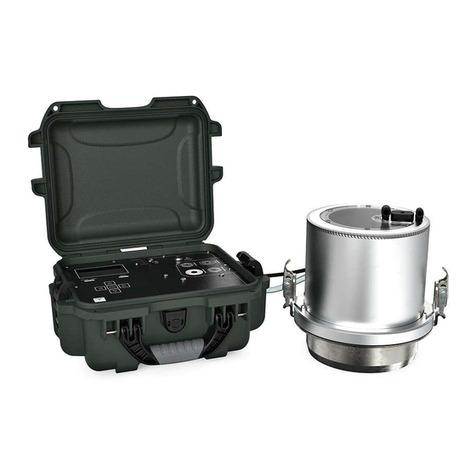
METER
METER SATURO User manual
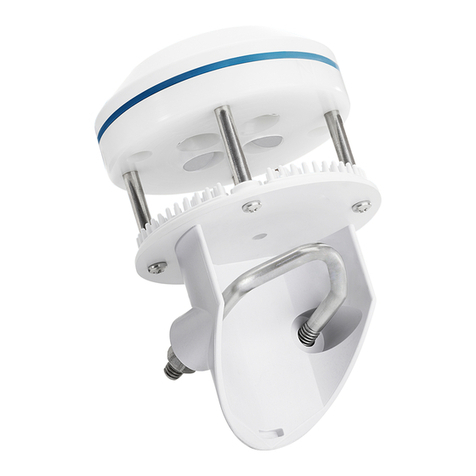
METER
METER ATMOS 22 User manual
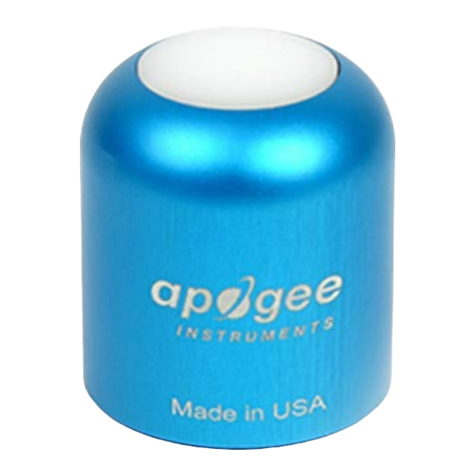
METER
METER APOGEE SQ-521 User manual
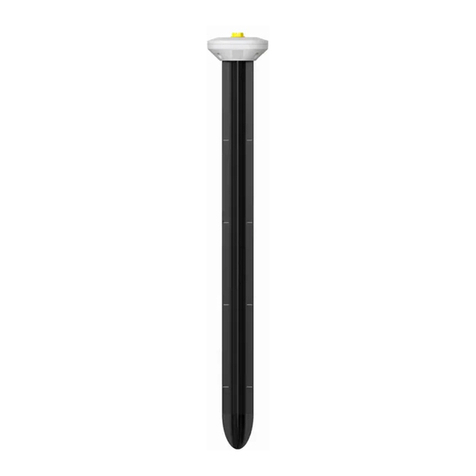
METER
METER TEROS 54 User manual
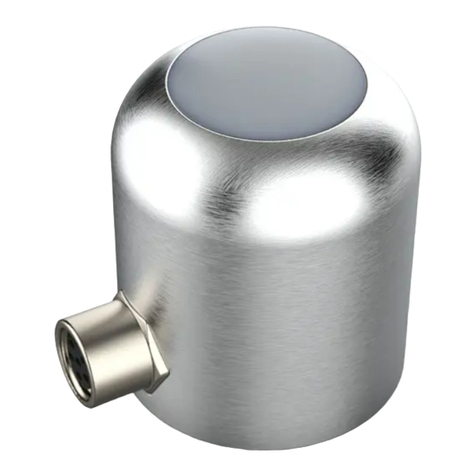
METER
METER APOGEE SU-221 User manual

METER
METER ROS 1 User manual
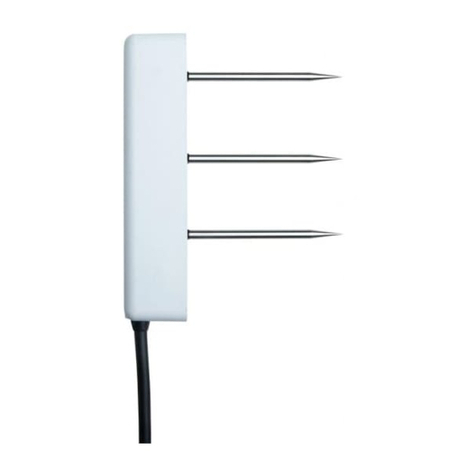
METER
METER TEROS 11 User manual
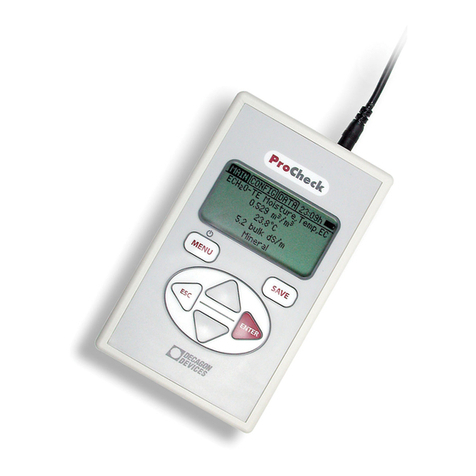
METER
METER PROCHECK User manual
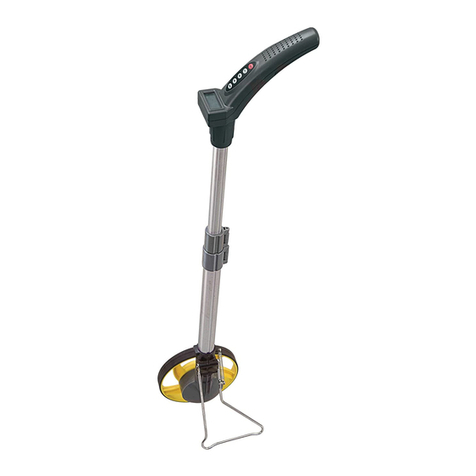
METER
METER MW04 User manual
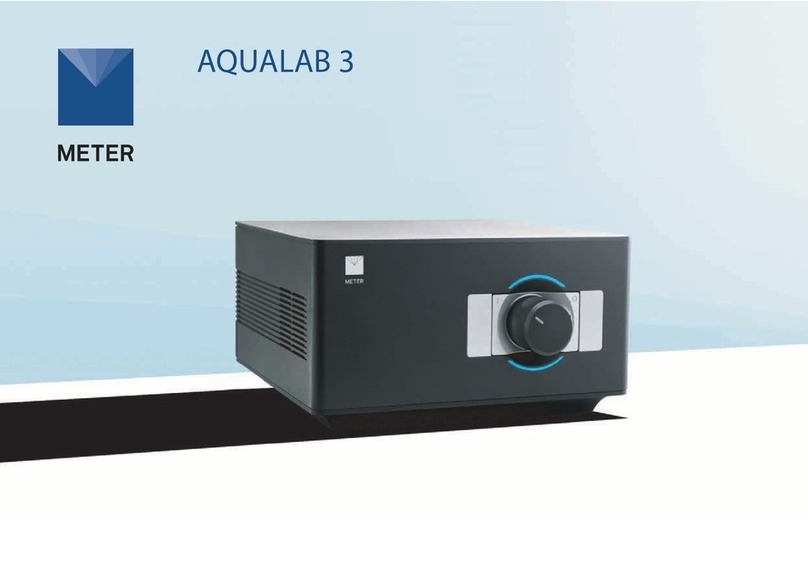
METER
METER AQUALAB 3 User manual
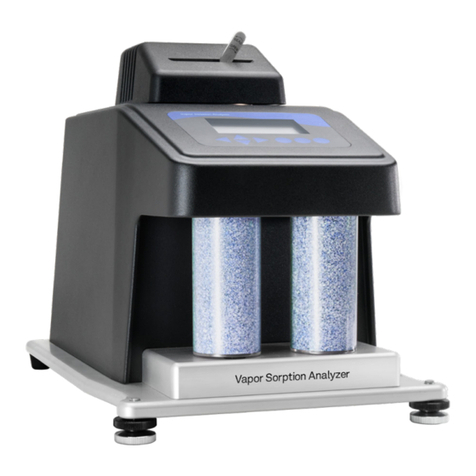
METER
METER AQUALAB VSA User manual

METER
METER TEROS 32 User manual

METER
METER ATMOS 22 User manual

METER
METER SC-1 User manual

METER
METER G3 User manual
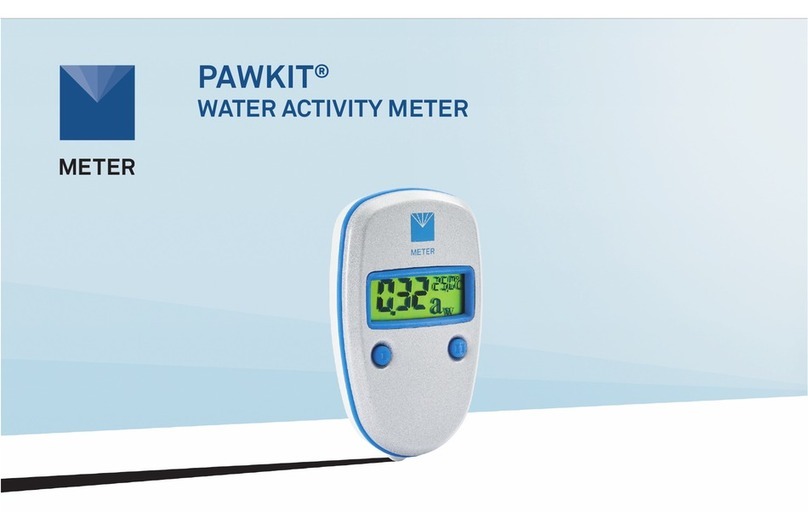
METER
METER AQUALAB PAWKIT User manual

METER
METER SATURO User manual
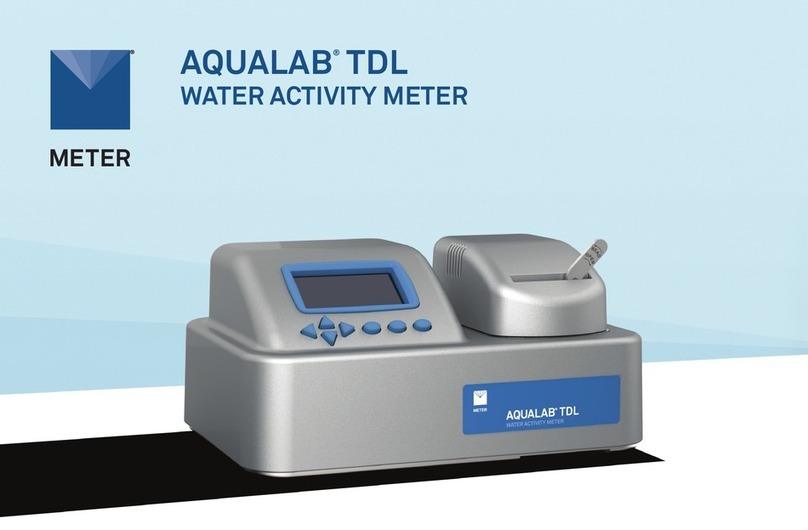
METER
METER AQUALAB TDL User manual
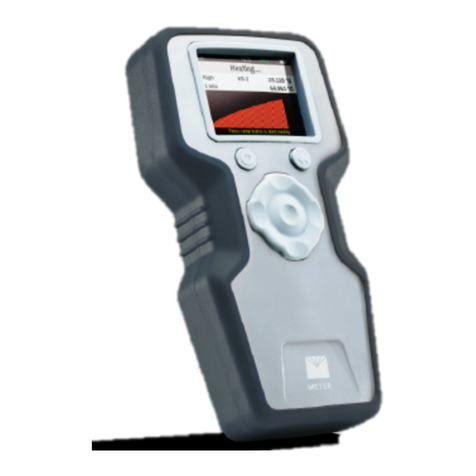
METER
METER TEMPOS User manual
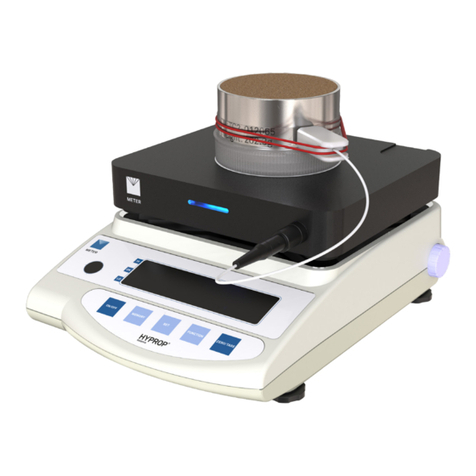
METER
METER VARIOS User manual


